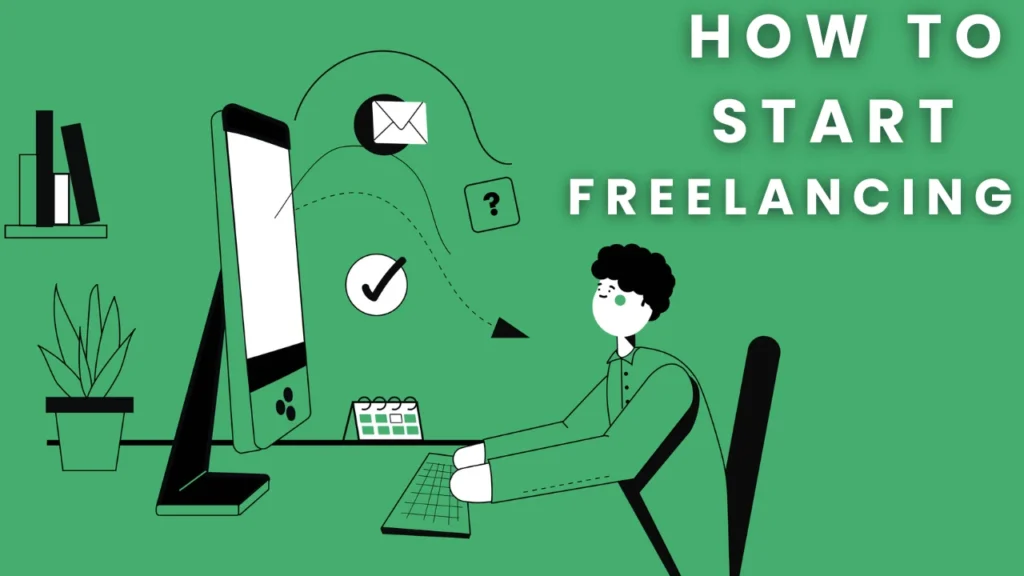Introduction
Are you tired of the 9-to-5 grind and looking for a way to become your own boss? Freelancing might be the suitable solution for you. Whether you’re a writer, designer, developer, or marketer, freelancing allows you to work independently, choose your clients, and set your own schedule.
In this guide, we will walk you through everything you need to know about how to start freelancing and build a successful career.
1. Understanding Freelancing
Before diving into the freelancing world, it’s important to understand what it actually is.Freelancing method running independently in preference to being hired by way of a single business enterprise. Freelancers take on projects from multiple clients and earn money based on their work.
Benefits of Freelancing
- — Flexibility – paintings from anywhere at any time
- Be Your Own Boss – No need to report to a manager.
- Unlimited Earning Potential – Your income depends on your skills and effort.
- Diverse Opportunities – Work with multiple clients across various industries.
Challenges of Freelancing
- No Fixed Income – Your earnings may fluctuate.
- Self-Discipline Required – Managing your own time is crucial.
- Finding Clients – Building a strong client base takes time and effort.
2. Identifying Your Skills and Niche
To succeed as a freelancer, you need to determine what skills you can offer. Think about your strengths, interests, and expertise. Some popular freelancing niches include:
- Writing & Editing – Blog writing, copywriting, technical writing
- Graphic Design – Logo design, branding, UX/UI design
- Web Development – Frontend/backend development, WordPress
- Digital Marketing – SEO, social media management, content marketing
- Virtual Assistance – Administrative tasks, customer support
3. Building Your Portfolio
A portfolio showcases your skills and experience to potential clients. If you’re just starting, consider these strategies to build your portfolio:
- Work on personal projects to demonstrate your abilities.
- Offer your services at a discount to a few clients.
- Contribute to open-source projects or non-profits.
- Create case studies highlighting your work process and results.
4. Setting Up Your Freelance Business
Treat freelancing like a business by organizing the legal and financial aspects:
- Choose a business name (or use your real name).
- Register as a sole proprietor or LLC based on your country’s laws.
- Open a business bank account to separate personal and work finances.
- Keep track of invoices, payments, and taxes to avoid financial trouble.
5. Choosing the Right Freelance Platforms
Freelance platforms help you connect with clients and find projects. Some popular platforms include:
- Upwork – Great for beginners and professionals.
- Fiverr – Best for selling services in a gig-based format.
- Freelancer – Good for bidding on projects.
- Toptal – High-quality projects for top freelancers.
- PeoplePerHour – Good for UK-based freelancers.

6. Finding Clients and Landing Projects
Finding clients can be challenging in the beginning. Here are some ways to get freelance work:
- bloodless Emailing – attain out to ability customers without delay.
- Networking – Join industry-related groups and communities.
- Social Media – Use LinkedIn, Twitter, and Facebook to showcase your skills.
- Job Boards – Websites like We Work Remotely and ProBlogger list freelance gigs.
- Referrals – Ask satisfied clients for recommendations.
7. Setting Your Rates
Deciding how much to charge can be tricky. Consider these factors when setting your freelance rates:
- Market Rates – Research industry standards.
- Experience Level – Charge based on your expertise.
- Project Complexity – More complex work should pay more.
- Time Commitment – Factor in the number of hours required.
Common pricing models include:
- Hourly Rate – Charge per hour worked.
- Fixed Price – Charge a set fee for a project.
- Retainer Model – Ongoing monthly payments from clients.
8. Creating a Winning Proposal
When applying for jobs, your proposal should stand out. A good freelance proposal includes:
- customized advent – deal with the patron by means of call.
- Understanding of the Project – Show that you grasp their needs.
- Your Approach – Explain how you’ll complete the task.
- Portfolio Samples – Provide links to relevant work.
- Clear Pricing and Timeline – Be upfront about your rates and deadlines.
9. Managing Your Freelance Work Efficiently
Freelancers need to stay organized to meet deadlines and maintain client relationships. Here are some tools that can help:
- Project Management – Trello, Asana, ClickUp
- Time Tracking – Toggl, Clockify
- Communication – Slack, Zoom, Skype
- Invoicing & Payments – PayPal, Stripe, QuickBooks
Additionally, using contracts for every project ensures both parties are protected.
10. Scaling Your Freelance Business
Once you’ve established yourself, consider expanding your freelance business:
- Increase Rates – Charge more as your expertise grows.
- Build a Personal Brand – Start a blog, YouTube channel, or podcast.
- Outsource Work – Hire assistants to help with tasks.
- Create Passive Income – Sell digital products or online courses.
Conclusion
beginning a freelancing profession may be each exciting and hard. By identifying your skills, building a strong portfolio, and marketing yourself effectively, you can turn freelancing into a successful and sustainable career. Keep learning, networking, and improving your skills to stay ahead in the competitive freelancing world.
**now could be an appropriate time to take the first step! Start freelancing today and build the career of your dreams.

